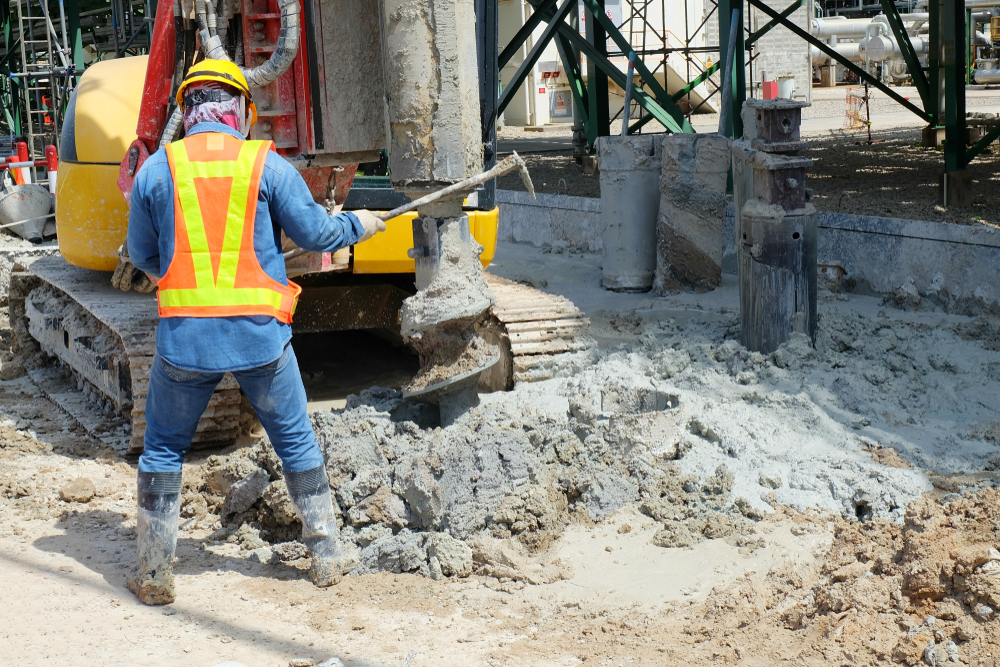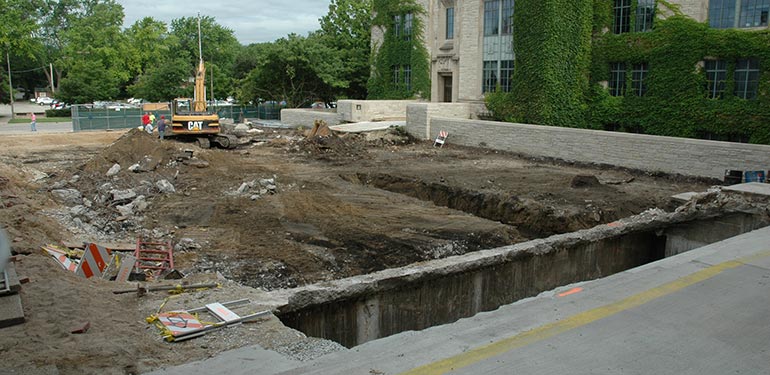A Detailed Review of the Trick Obligations of Geotechnical Designers in Site Characterization and Ground Improvement Techniques for Engineering Solutions
Geotechnical engineers are important to the successful execution of engineering tasks, tasked with the important responsibilities of website characterization and the application of ground enhancement methods. Their work involves an extensive analysis of subsurface conditions, using different screening methods to recognize soil and rock buildings.
Function of Geotechnical Engineers
Geotechnical designers play a critical role in the design and building and construction of framework by examining the actions of soil and rock underneath the surface - geo tech engineering. Their obligations encompass evaluating subsurface problems to notify design choices that guarantee architectural stability and safety and security. By carrying out comprehensive analyses of soil homes, consisting of shear strength, compressibility, and permeability, geotechnical designers provide important data that affects the selection of ideal construction products and techniques
In addition to examining soil technicians, geotechnical designers are entrusted with identifying possible threats such as landslides, sinkholes, and ground negotiations. Their proficiency assists minimize threats related to these geotechnical phenomena, thus securing both the setting and public safety. They likewise team up very closely with other engineering self-controls, ensuring that geotechnical considerations are incorporated right into total project design.
Moreover, geotechnical engineers involve in the analysis of existing frameworks, supplying referrals for retrofitting and fixings when necessary. Their comprehensive understanding of soil-structure interaction is necessary for the development of sustainable facilities options. In general, the function of geotechnical engineers is indispensable to the effective awareness of building and construction tasks, guaranteeing they are secure, durable, and certified with governing criteria.

Website Characterization Processes
Effective site characterization procedures are essential for understanding the subsurface conditions that influence project layout and implementation. Geotechnical designers employ a systematic strategy to gather, examine, and translate data relating to soil, groundwater, and rock qualities. This process begins with a thorough evaluation of existing literary works and historical website information, offering insights right into previous website problems and possible challenges.

Data analysis adheres to fieldwork, where engineers utilize geostatistical techniques to analyze findings and develop geological models. This modeling aids in determining prospective geohazards, such as landslides or liquefaction, which are essential for danger evaluation. Ultimately, the results educate style recommendations, making sure that design options are both safe and efficient. Through attentive site characterization, geotechnical engineers prepared for successful project execution, maximizing and reducing unforeseen problems source allotment.
Soil and Rock Screening Methods
While understanding subsurface conditions is important, the option of suitable dirt and rock testing approaches is just as important for precise analysis and design. Geotechnical designers use a selection of testing techniques to assess the mechanical and physical buildings of dirt and rock materials.
Research laboratory tests, such as Atterberg limitations, grain dimension analysis, and unconfined compressive strength examinations, supply essential data on soil actions under various dampness problems and loading scenarios. These examinations assist identify soil category and predict settlement or shear strength qualities vital for structure layout.
In-situ screening approaches, including Requirement Infiltration Tests (SPT), Cone Infiltration Examinations (CPT), and pressure meter tests, allow designers to collect data directly from the ground. These methods use useful insights into the soil's thickness, uniformity, and stratification without the requirement for extensive sampling.
Rock screening commonly involves core tasting and laboratory analysis to assess homes like uniaxial compressive stamina and rock quality classification (RQD) Together, these dirt and rock testing methods make it possible for geotechnical designers to make enlightened choices relating to site-specific challenges, making certain the safety and security and stability of engineering remedies.
Ground Renovation Techniques
Ground renovation methods are necessary for improving the engineering homes of dirt, thus raising its load-bearing ability and minimizing negotiation. These techniques are essential in addressing challenges provided by weak or bothersome soils, which can substantially affect the security and durability of frameworks.
Various ground renovation methods are employed, consisting of compaction, grouting, and dirt stablizing. Grouting, on the other hand, entails injecting a fluid material into the ground to fill up gaps and boost soil communication.
Soil stabilization encompasses a variety of methods, from chemical ingredients to mechanical therapies, focused on enhancing the soil's resistance to disintegration and contortion. Strategies such as lime stabilization or concrete mixing change the residential properties of the soil at a particle degree, improving its general efficiency.
Importance of Geotechnical Analyses
Geotechnical evaluations play an important function in the preparation and design of design jobs, as they offer vital details regarding the subsurface problems. Understanding dirt residential or commercial properties, rock formations, groundwater degrees, and possible geohazards is important for making sure the stability and safety and security of structures. These evaluations enable engineers to make educated choices pertaining to site selection, check these guys out design specifications, and building techniques.
The relevance of geotechnical evaluations expands past initial project stages; they contribute in risk administration and price performance. By recognizing potential problems early, such as soil settlement, slope instability, or too much groundwater, engineers can develop suitable mitigation strategies, lowering Learn More the chance of pricey hold-ups and structural failures. Moreover, these assessments support compliance with governing needs and improve the sustainability of engineering techniques.

Final Thought
Finally, geotechnical engineers are important to making certain the safety and security and security of engineering jobs with comprehensive website characterization and ground renovation techniques. geotechnical eng. Their systematic technique to assessing subsurface problems, combined with their recommendations for efficient ground adjustment, dramatically boosts soil properties and load-bearing capability. The expertise of geotechnical designers not just helps with informed project planning however additionally makes sure conformity with policies and promotes effective interaction among stakeholders, inevitably adding to effective design outcomes
Geotechnical engineers play a critical duty in the style and construction of facilities by evaluating the actions of dirt and rock below the surface area. By carrying out in-depth analyses of dirt residential properties, consisting of shear toughness, compressibility, and permeability, geotechnical designers offer crucial information that influences the selection of suitable building and construction products and methods.
In enhancement to examining dirt auto mechanics, geotechnical designers are tasked with identifying prospective hazards such as landslides, sinkholes, and ground negotiations. Geotechnical designers employ a methodical strategy to collect, review, and translate data regarding groundwater, soil, and rock features. By recognizing prospective issues early, such you could try here as soil settlement, slope instability, or too much groundwater, designers can develop ideal reduction strategies, minimizing the probability of pricey delays and structural failures.